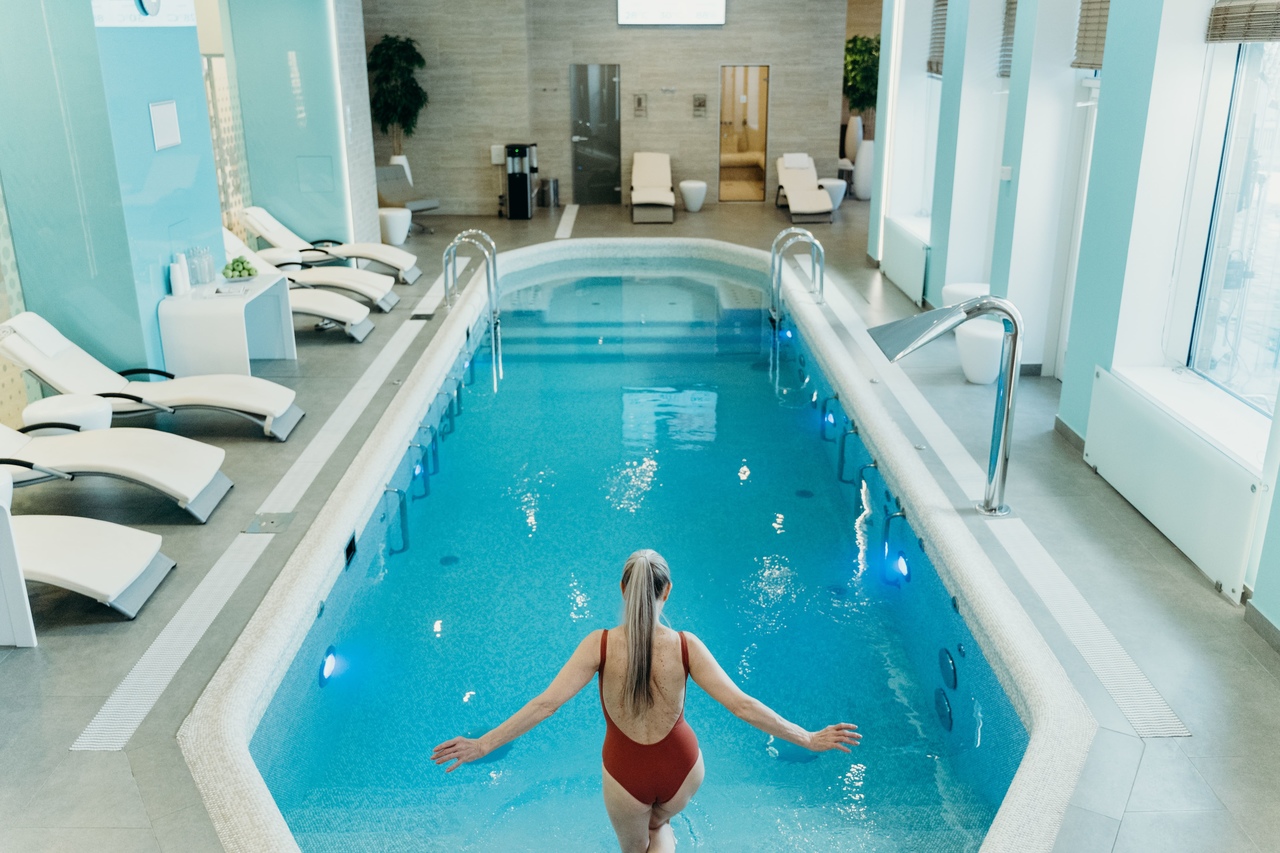Thalassotherapy
The word thalassotherapy was invented in 1865 by Dr. Joseph La Bonnardière. This word comes from two Greek terms, ???thalassa??? which means the sea, and ???therapeia??? which means ???care/therapy???. During the 18th century, the benefits of seawater were discovered and demonstrated by the Greeks, the Romans and the Egyptians.
France is a pioneer in this field, is still positioned as a world leader in thalassotherapy with almost a hundred centers located mainly on the Atlantic coast. Its market is estimated to have an annual turnover of around 150 million euros. France is one the countries that are the most fond of these seawater spa treatments.
Seawater is used for natural pools, other infrastructures on the coastline (public swimming pool), and also to provide water to thalassotherapy centers. Thalassotherapy (seawater cure) has many benefits for the skin and for health, which have been recognized for thousands of years. The mineral salts contained in seawater are very beneficial for the skin, to boost lymphatic circulation and stimulate blood circulation.
Thalassotherapy centers offer hydrotherapy, heated seawater pools, algae treatments, and also massages and relaxation treatments.

A certain water quality is required and regularly controlled for seawater pools. In order to obtain this quality, different filtration systems are necessary.
According to the French Directive 2006/7/CE, the methods to control bathing water quality have been modified for current practices. Only two parameters need to be checked: intestinal enterococci and Escherichia coli. These germs are known to be accompanied in environments where they are abundant, by pathogenic germs.
The seawater used in swimming pools undergoes very little treatment to keep its natural quality and benefits outside of the 5% chlorination on the total water volume pumped each day according to the standards norms required by the French sanitary authorities.
Thalassotherapy centers can also apply for a label to prove that their seawater pools are of the best quality possible. Several labels exist and have more or less demanding criteria, those required in general are:
- Being located less than 1 kilometer away from the sea
- Natural and controlled seawater
- pH control and bacteria analysis
- Be explicit on the seawater intake
- Salinity checks done on the pools
According to the Coastal Law, thalassotherapy centers can install a seawater intake, if necessary, on so-called ???remarkable??? areas. They are unbuildable places in normal times. The degree of May 21, 2019 allows it on the condition that their location in these places corresponds to technical requirements and that they leave the site in its natural state after burial. The center must also be in close proximity to the sea.
The best way to filtrate seawater is to use beach sand, the best natural filter. This filtration gives a clear, rich in trace elements, water. In 2020, the Enerplage® drainage system was installed in St-Jean-de-Luz to provide seawater for the pools of the thalassotherapy center and also to heat and cool the infrastructure by using a seawater heat pump. The Enerplage® technology is implemented in La Baule-Escoublac to protect the beach from erosion and it is also providing water to two different infrastructures. One is the aquatic center Aquabaule, they also use a heat pump to heat and cool the building using seawater. The other one is the Rivage Sea Spa Center, for the same purposes. We also provide seawater to the biggest aquarium in Europe: Nausicaa.
The seawater obtained from the drainage system of Enerplage is highly filtered and idea for pools and any other infrastructure that use seawater (desalination plants, fish farms, etc.). Our seawater does not need more filtration system and is therefore ideal for a heat pump to cool and heat buildings and reduce costs. A seawater heat pump uses the calories of seawater to transform it into energy. This process is called geothermal marine energy.
